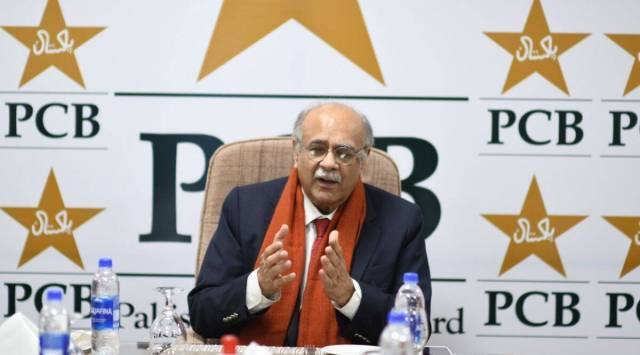Hybrid Model Debate Escalates: ACC Hits Back at PCB’s Refusal
The debate around hybrid models for the upcoming cricket season has just become even more intense, with the ACC issuing a hard-hitting response to the likely new President of the PCB’s rejection of the concept. The stakes are high, with both sides adamant in their stance and neither willing to budge. This post will explore the latest developments in the ongoing hybrid model debate.
1. Background on the Hybrid Model Debate

Cricket has evolved significantly over the years, with new formats and rules being introduced to keep the sport fresh and exciting. One such innovation is the concept of Hybrid Models, which are a mix of different formats of the game. This new approach has been debated by the cricketing community, with many experts and stakeholders discussing the pros and cons of Hybrid Models.
The Asian Cricket Council (ACC) has been particularly vocal on the issue, as they believe it could benefit cricket in Asia and the rest of the world. Recently, the debate has escalated as the Pakistan Cricket Board (PCB) has rejected the idea of Hybrid Models. This has led to a Hard-Hitting response from the ACC, who believe that this approach could have a positive impact on the sport.
2. PCB President Rejects Hybrid Model

The Hybrid Model Debate has taken another turn as the President of the Pakistan Cricket Board (PCB), Mr. Ehsan Mani, has recently rejected the proposed idea of hybrid models. In an interview with the press, he stated that “we need to preserve the integrity of cricket and maintain the traditional values that have made it such a popular sport around the world. Hybrid models do not align with these values, and we cannot risk jeopardizing the essence of cricket.”
The announcement comes as a disappointment to many cricket enthusiasts who were eagerly anticipating the implementation of the hybrid models in cricket. The proposed idea of combining the best aspects of T20 cricket and traditional Test cricket would have brought a new dimension to the sport and added to its entertainment value .However, the PCB President’s statement has not gone down well with the Asian Cricket Council (ACC), which has issued a hard-hitting response to the rejection.
The ACC, which is the governing body for cricket in Asia, has stated that “the decision by the PCB to reject the hybrid models is regressive and fails to recognize the changing landscape of the sport. Cricket needs to adapt and evolve to keep up with the demands of the modern audience, and the hybrid models would have been a step in the right direction.”
The disagreement between the PCB and the ACC highlights the ongoing debate over the pros and cons of hybrid models in cricket. While some argue that it would bring a new dimension to the sport and attract a wider audience, others are concerned about the potential dilution of the traditional values and techniques of the game.
3. ACC’s Response to PCB’s Rejection
Following the news of the PCB President’s rejection of Hybrid Models, the ACC issues a hard-hitting response to express its disappointment and frustration towards this decision.
In a statement released by the ACC, the organization emphasized the importance of exploring new formats and models to evolve the game of cricket and engage with a broader audience. Hybrid Models have been regarded as a potential solution to enhance the competitiveness and entertainment value of cricket, and the ACC has been actively promoting its adoption in the cricketing world.
The ACC believes that Hybrid Models have the potential to attract a new fanbase, enhance the overall cricketing experience and bridge the gap between the different formats of cricket. Therefore, it is disappointed to see the PCB reject the notion without fully exploring its potential and considering the potential benefits it can bring to the game.
Furthermore, the ACC believes that PCB’s rejection of Hybrid Models can hinder the progress of cricket and leave the sport behind other popular global sports. In today’s age, where technology and innovation are driving progress in every industry, it is essential to explore and adopt new models to evolve and thrive in the competitive sports landscape.
4. Pros and Cons of Hybrid Models in Cricket
Hybrid models in cricket have been a topic of debate for some time now. There are many pros and cons to implementing such models, and both sides have valid arguments.
One of the biggest advantages of hybrid models is that they provide greater flexibility for scheduling and team composition. They allow for the inclusion of players from different countries and backgrounds, which can lead to a more diverse and competitive game. Hybrid models also provide opportunities for cricket fans around the world to watch their favorite players compete on a global stage.
However, there are also concerns with hybrid models. Some argue that they may dilute the quality of the game, as players may not have the same level of experience and skill as their international counterparts. Others worry that hybrid models may create unfair advantages for certain teams or players. Despite these concerns, the ACC issues hard-hitting responses to the PCB’s rejection of the hybrid model. The ACC believes that the hybrid model has the potential to transform cricket and make it a more dynamic and exciting sport.
The organization believes that cricket needs to evolve and adapt to stay relevant in a rapidly changing world. Overall, the pros and cons of hybrid models in cricket are complex and nuanced. It will be interesting to see how this debate unfolds and whether or not cricket will embrace this innovative new approach to the sport.
Conclusion:
In conclusion, the debate surrounding the adoption of Hybrid Models in cricket seems to be reaching a boiling point. While the PCB’s President has rejected the idea of implementing such models, the ACC issues Hard-Hitting responses to such refusals, highlighting the potential benefits that these models could bring to the game. The pros of Hybrid Models include the possibility of increased revenue generation, a more exciting and unpredictable game, and the introduction of newer formats to attract more fans to the game. However, some cricketing purists may argue that such models would detract from the traditional format of the game.
Also Read : Another Catch Controversy: Shubman Gill Victimizes Batter In TNPL Replay
Also Read : Top Benefits of Hiring a Digital Marketing Virtual Assistant




